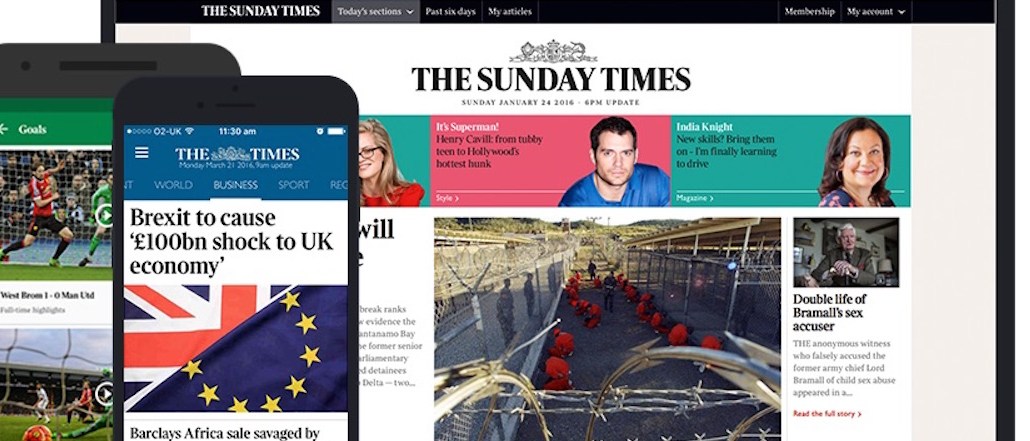
The Times has a reputation for having the hardest paywall in the U.K., but it’s not opposed to some open-access experimentation — as long as it results in new subscribers. Last week the national newspaper introduced registered access, allowing non-subscribers access to just two stories a week in exchange for registering.
This doesn’t mark any kind of long-term relaxation of its paywall, which is turning a tidy profit: the number of subscribers has risen from 402,000 to 413,600 in the last year, with digital subscriptions growing from 170,000 to 182,500. In March, it changed its editorial mandate and dropped breaking news. Since then there’s been a 20 percent increase in weekday traffic from existing subscribers.
The two articles a week, in exchange for details like email address and country of residence, are intended as a sampling exercise to attract new subscribers.
This is the closest the paper will come to making any content free. “We don’t use the F word here,” The Times digital director Alan Hunter told Digiday. “It’s a way of experimenting with the subscription funnel. We’ll continue to do experiments like this for a long time.”
Anyone inside or out of the U.K. can access their two articles if they register on the website (or mobile site). There are no plans to do the same on domestic apps yet, nor the international Times of London app.
It’s not the first time The Times has experimented with making content open to people if they register some details. For the last few months it’s allowed subscribers to share articles from their iPad apps, via email and social networks like Facebook and Twitter. Whoever they share it with can read the article in full once they register. So far there’s been a “significant uptick” in non-subscribers coming to the site via articles that have been shared with them from iPad subscribers, according to Hunter.
The publisher has also allowed short video clips to be viewed by non subscribers via social platforms, since the start of the year. “We know subscribers pay to read our content, not to watch it, so shorter clips we’re fine with being open,” he added.
But until last week, any open-access experiments had been fairly ad hoc. This particular test will likely last for some time.
The timing for the experiment comes as quality news publishers have been enjoying a traffic boom in the wake of the startling EU referendum outcome. Britons have turned to trusted journalistic sources to understand the effects of the Brexit vote, and traffic has gone through the roof for all major newspapers.
The Financial Times relaxed its paywall the day before the vote, and The Times relaxed its own paywall the Friday after the vote. Naturally, it’s readership spiked, but it also doubled the average subscription sales it would normally make in a typical weekend, according to Hunter. That was given a helping hand by the display retargeting the publisher ran to all non-subscriber visitors to the site on the day the paywall was down.
Aside from main stories such as the Prime Minister David Cameron resigning, which was among the most read, the most visited pieces were actually the deeper, analytical ones as opposed to surface news. An article from columnist Philip Collins called “Leave will find it impossible to keep their promises” was the second most popular Brexit-related story the week after the vote. An explainer article “Life after Brexit: What happens next” and an overview from a Brussels correspondent showing the reaction across Europe and how it would affect campaigns to leave the EU in other countries, were other examples of its most popular articles.
“It really brought home the fact that this is the kind of content people come to us to read,” said Hunter. “They go elsewhere to read news to be informed, but they come to us to get well informed. They can go deeper beyond the story to find out that’s really going on.”
More in Media

Digiday+ Research: Publishers’ growing focus on video doesn’t translate to social platforms
Major publishers have made recent investments in vertical video, but that shift is not carrying over to social media platforms.

Technology x humanity: A conversation with Dayforce’s Amy Capellanti-Wolf
Capellanti-Wolf shared insight on everything from navigating AI adoption and combating burnout to rethinking talent strategies.

How The Arena Group is rewriting its commercial playbook for the zero-click era
The company is testing AI-powered content recommendation models to keep readers moving through its network of sites and, in doing so, bump up revenue per session – its core performance metric.





